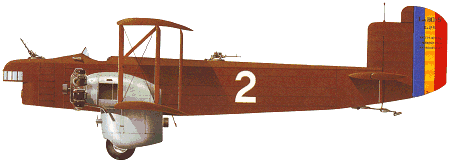 |
Liore-Olivier LeO 25 / LeO 252 / H-251928 |  |
| TORPEDO-BOMBER-RECONNAISSANCE FLOAT BIPLANE | Virtual Aircraft Museum / France / Liore-Olivier |
 |
Powered by two 429kW Hispano-Suiza 12Hb engines, the Liore-et-Olivier LeO 25 prototype four-seat night-bomber was delivered in 1928 as part of the second series batch of LeO 20s. It showed little improvement over the LeO 20, from which it could be distinguished by its redesigned fin. The next year it was redesignated LeO 252.01 after being re-engined with Hispano 12Mbr engines, and in 1931 it was fitted with two large wooden floats for evaluation by the French navy. The second LeO 252, slightly modified, appeared in 1932 and was bought by Romania. Three landplane developments of the LeO 252 were delivered to Brazil as LeO 253 aircraft in 1931, but were not assembled until the following year when they took part in the civil war in that country. The LeO 253 had a maximum speed of 215km/h. The LeO H-254 flew for the first time in the summer of 1932, and was a refined version of the H-252 intended for production, but only two examples were built and these were used at Berre to familiarise Farman F.168 crews with the more advanced aircraft to come. The LeO H-255 was a version of the H-254 with 515kW Hispano-Suiza 12Xbrs engines. Flown first as a landplane, then as a seaplane, it gained several world height- with-load records for seaplanes. The LeO H-256 appeared in late 1932, introducing increased wing area. The LeO H-257 was a considerable advance over the previous prototypes, powered by the Gnome-Rhone 14Kbrs Mistral Major radial engines preferred by the French navy, and with an enclosed cabin for the pilot. It first flew in March 1933 and was sufficiently impressive to earn an order for 60 LeO H-257bis series seaplanes with more powerful Gnome-Rhone 14Kirs/Kjrs engines, a strengthened structure, and the nose gun position enclosed in a glazed rotating cupola. In fact, the LeO H-258 was delivered before the H-257bis, 26 going into service, initially with Escadrilles 3B1 and 3B2, from June 1935 onwards. The H-258 had two 484kW Hispano-Suiza 12Nbr engines and attained a maximum speed of 240km/h. The H-257bis went into service from June 1936, equipping seaplane Escadrilles 3B1, 3B2, then B-1, B-2, B-3 and finally E.7 and 3S4. The Armee de I'Air used the landplane version with fixed independent mainwheels in Groupe de Bombardement II/25. After neutrality patrols during the Spanish Civil War, the LeO floatplanes were used as convoy escorts and for submarine patrols from September 1939, seeing action in the English Channel, and on the Atlantic and Mediterranean coasts. Some were flung into action on bombing raids against the German Blitzkrieg in the summer of 1940, suffering heavy losses. At the outbreak of war 19 landplane LeO H-257bis aircraft were still in service in North Africa, and in August 1940 the Vichy regime had 53 floatplanes on strength. The last examples were withdrawn from training and target towing duties at the end of 1944. The solitary H-259, the last of the H-25 series, had 641kW Hispano-Suiza 12Ydrs/Yfrs engines and disappointing performance, and, after test flights in 1935, no orders were received.

|  COMPANY PROFILE | ||||||||||||||||||||||||||||||||||||||||||||||||||
 |

|
